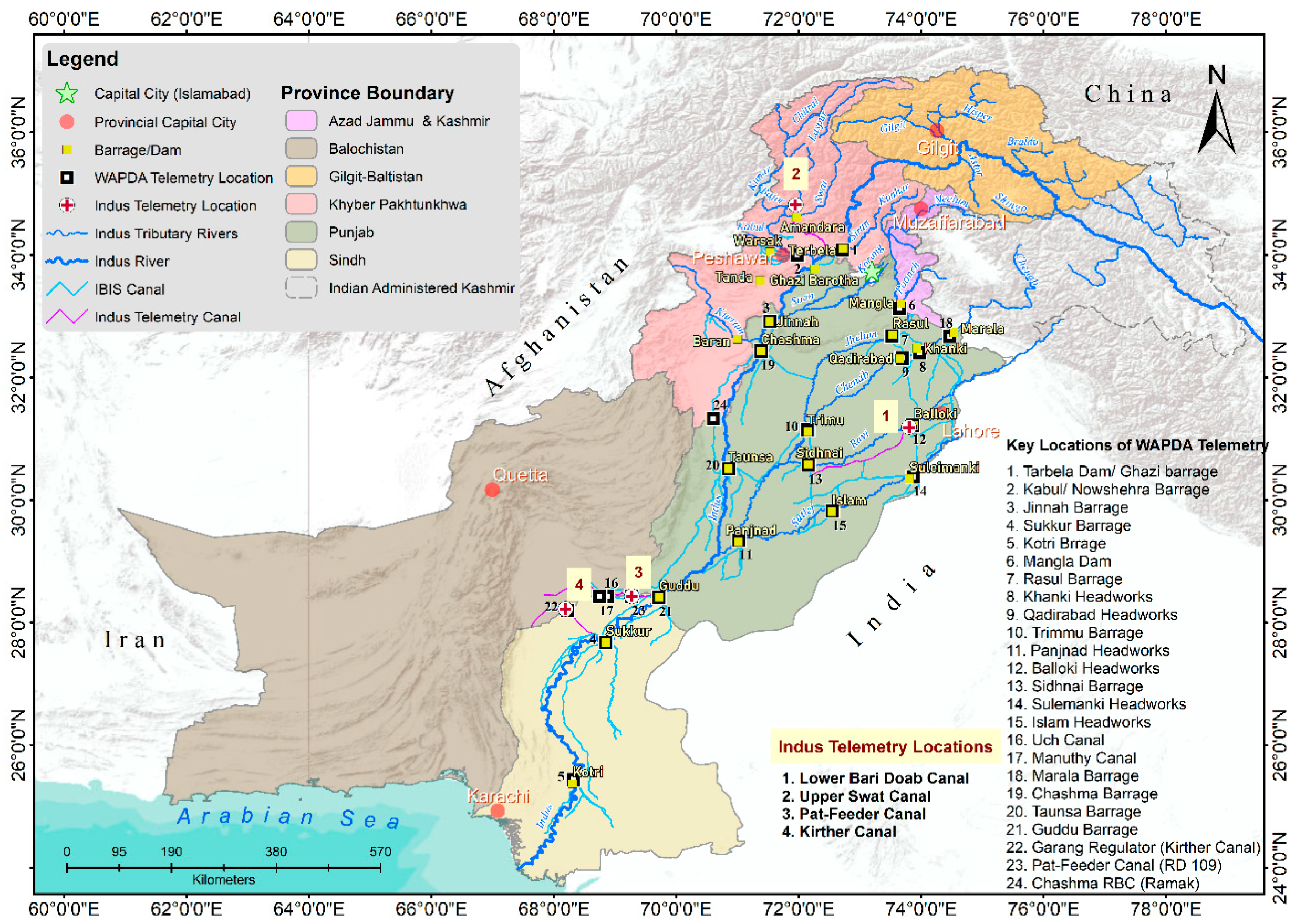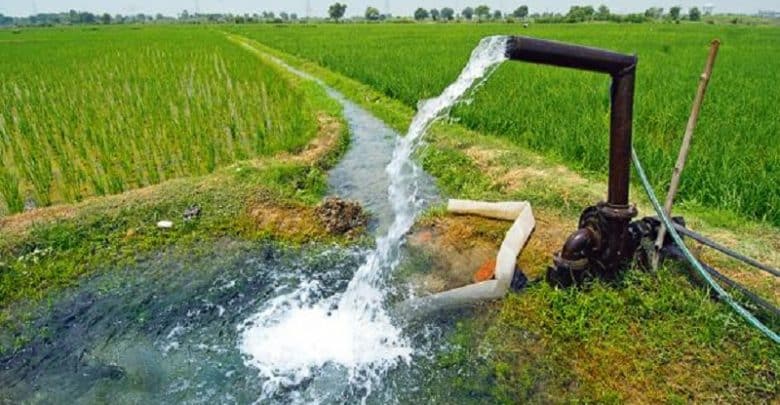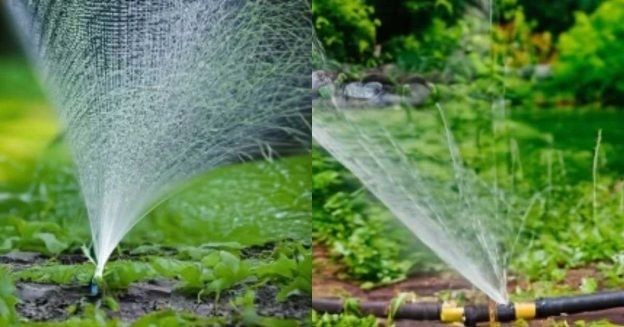
A functioning fresh water system is key to the economic, social and environmental affairs of any country. If we are to properly understand our water resources, we have to take into account all the factors that drive it. Here we will review our water resources and understand the factors that are creating problems in water management and related country development in our country and how we can solve them.
pakistan irrigation system
Country’s water resources and their status
If we examine the country of Pakistan, it is considered among relatively dry countries. Most of the country has low rainfall.
If we consider the map of our country, it becomes necessary to thank Allah for the fact that the flow of the Indus River and other big and small rivers originating from the great mountain ranges of the Himalayas and the Karakoram starts from the north of the country to the south. Thus there is a natural flow of water throughout the length of the country.
Thanks to these rivers, our country has abundant fresh water resources and an average of 150 million acre feet (MAF) or 185 billion cubic meters (cubic meter) of water flows annually. But when we divide this volume by 22 million people. So it remains only 850 cubic meters per capita (which was more than 1000 in 2008 according to the World Bank report), while according to international standards, the availability of water per capita should be 1800 cubic meters per year and in the country where this level is 1000 If the cubic meter per capita per year is less than that, it is considered as a water-scarce country.
drip irrigation system in Pakistan
Moreover, as a result of increasing water aggression by neighboring India, the flow of water is decreasing with each passing year. Due to its occupation of Kashmir, India has the strategic advantage of damming our rivers. Or diverting them to their own country by building barrages. For example, through projects like Bagalhar Dam, Kishanganga and Ratle Dam. The Indus Basin Treaty of 1960, under which the waters of the three eastern rivers (Beas, Ravi and Sutlej) can be used by India and the water of the three western rivers (Indus, Chenab and Jhelum) can be used by Pakistan.

Therefore, in the coming time, Pakistan will suffer from a severe water crisis, which will not only affect the common people, but the economy of the country, which is dependent on agriculture, is feared to be severely damaged. The statement of Quaid-i-Azam that “Kashmir is the aorta of Pakistan” is a proof of his foresight which he realized at that time that this conflict will definitely arise in the future and India will take our waters. Reserves can be robbed. On the other hand, due to global climate change, the patterns of rains and snowfall are changing all over the world, so there are droughts or unseasonal rains in different countries, which are very harmful to crops and natural life, forests, etc.
Use of water resources
Now let’s examine how much water is used in Pakistan. According to the report published by the United Nations Development Organization (UNDP) in 2016 (can be seen in the diagram of figure 2. According to which) 91.6% of the use is in agriculture. While in other sectors such as the use of the urban population. 5% 2 and industries. 3.3% in. So our future strategy should be in the light of this and should focus on the most water consuming sector.
Water Productivity
If the role of water resources in the country’s economy is to be properly understood, then the term water productivity coined by the World Bank has to be seen. That is, if the total GDP is divided by the total consumption of fresh water, it will be known how many cubic meters of water are used to produce each dollar of GDP. The highest water productivity in the world is in Luxembourg which
is 1308 dollars per cubic meter of water. While Pakistan is only at 1 dollar per cubic meter. It should be noted that our neighboring countries India and Iran are at 3 and 4 dollars per cubic meter respectively.
Being an agricultural country, Pakistan Irrigation System is a very important sector in the country. Pakistan is the country with the largest canal system in the world. Along with this, we also have a water storage system in the form of large dams, the notable ones being Tarbela Dam, Mangala Dam and other large and small dams. However, fifty years ago this was indeed a matter of pride, but as time passed, two factors came into play very quickly which must be understood.

Issues and challenges irrigation system in Pakistan
The first thing that needs to be understood is that the canal system has deteriorated over time and one problem in particular is that the water that seeped into the ground from the unpaved canals has caused water loss on the one hand and on the other hand And continued to create problems like Thor. At the same time, it also happened that by filling the dams with soil, on the one hand, their volume decreased and on the other hand, the rock cycle continued to be interfered with. It is necessary for marine life to stop in dams.
Lack of modern technology
Another thing which is even more important is that technology has evolved over time but we are still dependent on centuries old Irrigation System in Pakistan. Around the world today, modern Pakistan Irrigation System that irrigate more land with less water have come. These include Sprinkler System and Drip Irrigation etc. 80 to 90% of water can be saved by using these technologies.
Solutions to these problems
Now coming to the solution of this problem. If we want to take full advantage of the water resources of our country and develop the country, then two things have to be understood. Either we have to increase our water reservoirs or we have to reduce the huge amount of water that is being wasted in the fields or we have to consider both ways. What methods do we have available to do both of these things? It is important to compare their technical and economic feasibility.

Water reservoirs
First of all, we assess the water resources, how much water is available in the country and the need to expand the water resources and how much will be the cost. As mentioned above, the total flow of water on the surface of the earth is on average 150 MAF per year while the storage capacity of the dams is only 30 days. Thus we can store only 17 MAF water at a time.
While this amount is constantly decreasing. At present, the notable dams are Tarbela, Mangla, Gomal, Khanpur and Shahpur dams, but apart from them there are 150 small and big water reservoirs. In this context, the year 2018 is special. Successful in which Neelum Jhelum Dam, Tarbela Extension Project and Golan Dam are generating not only water but also cheap electricity. This water is diverted from dams and barrages to the fields through the canal system. Here it is also important to know that according to the IRSA report, the flow of water going down to the sea from the Kotri Barrage is absolutely zero for one hundred and forty to one hundred and eighty days in a year.
Ground water resources
It should be noted that the storage of underground water is much more than that, but according to Dr. Rafi Osmani, an expert in water resources, the current data is incomplete to estimate it correctly. But according to another expert in water resources, Dr. Hassan Abbas. This estimate is about 400 MAF while according to the UNDP report the usable underground water resources are 810 MAF (excluding unusable saline water) from which about one million tube wells have been installed across the country and these It receives 55 MAF of water annually.
Current projects
There are several new dams in the government’s plans and some are under construction, such as the Dasu Dam, which began construction in 2017. The first phase of the project cost $4.28 billion and will generate 4,320 MW of electricity. 1.1MAF water can be stored in this project. Apart from this, five to six small and big projects are running on the canals and water reservoirs of WAPDA.
Future plans
To estimate the new or postponed projects, take the example of the Kala Bagh Dam project in 1977. Estimated to cost $6.12 billion at the time, it had a simultaneous storage capacity of 6MAF and required a five-year construction period, but the project later became controversial over water distribution issues. The cost of the Diamer Bhasha Dam was estimated at $14 billion in 2013. It will have a storage capacity of about eight MAF and generate 4800 MW of electricity.
In this way, between the great mountains of Himalayas, Karakoram and Hindu Kush, there are projects to store water and generate electricity in dozens of places, but the most interesting project in this regard is the Katzarah Dam in Skardu, which has the capacity to hold 35 MAF of water. It will be the largest dam in the world and will have the capacity to generate 15,000 MW of electricity. The estimated cost of this project in 2016 is just seven billion dollars.
Prevention of pollution in water use
Wrong choice of crops
The silver lining in this whole situation is that we have increasing cultivation of water-demanding crops like sugarcane and rice. Both these crops are crops of tropical countries (where rainfall is high). The practice of making sugar from sugar beet is increasing worldwide, which grows in less water, while we still make sugar from sugarcane. Similarly, the cultivation of cotton, which used to require less water, is continuously decreasing and instead of it, sugarcane cultivation is increasing. This behavior needs to be discouraged. cultivation of other crops like sunflower etc. which grow in less water and give more profit need to be increased. In fact, such a policy should be brought at the government level which will guide the farmers of the country towards the crops.
Need to modernize pakistan irrigation system.
Due to the decay of Pakistan Irrigation System, various problems are arising and increasing day by day. For example, the reason for fog in winter is that we are putting more water in our environment than the crops need and it is being lost in the atmosphere in the form of water vapor, but it becomes fog in winter, which has economic consequences. Damages are separate. Similarly, the underground water is coming up, as a result, millions of acres of land are being destroyed due to floods.
As mentioned above, with the passage of time modern technology has come and we are still irrigating with ancient methods. For example, drip irrigation, sprinkler system etc. It is also important to understand their cost and usage. According to the Punjab Agriculture Department, the average cost of installing drip irrigation ranges from 125,000 to 200,000 rupees per acre. In this way, the production can be increased by 20 to 100% with at least 50% saving of water.
If it is to be implemented on a large scale, then understand that five thousand acres of land can be equipped with this technology for one billion rupees. If you multiply the same, two hundred billion rupees will be required for one million acres of land. It should be noted that compared to the dam, there is no need to invest all the money in one lump sum and this work can be done gradually. Other means can be used to conserve water, such as paving of watercourses, thus saving a lot of water. Along with this, a policy of water pricing (as is happening in many developed countries) can also be formulated. By which the farmers themselves take steps to prevent water loss.
Conclusion
Proper understanding of water resources and its use and prevention at the national level and for formulating its policies requires a proper and detailed understanding of these problems and all their factors. One has to prepare to deal with the effects of climate change in the coming time and for this one has to use modern technology in one’s agriculture and choose the right crops.
We have to increase the Water Productivity of our country. For this, the opinions of not only water experts but also environmental and biological experts are important. Because water resources are not only necessary for agriculture and electricity, but also for all biological species that depend on humans and nature, such as forests, marine life, and all those things that humans depend on, so that their rightful share is given to them. can get
VOICEUP PAKISTAN
Breaking News from Pakistan And Around The Globe!



